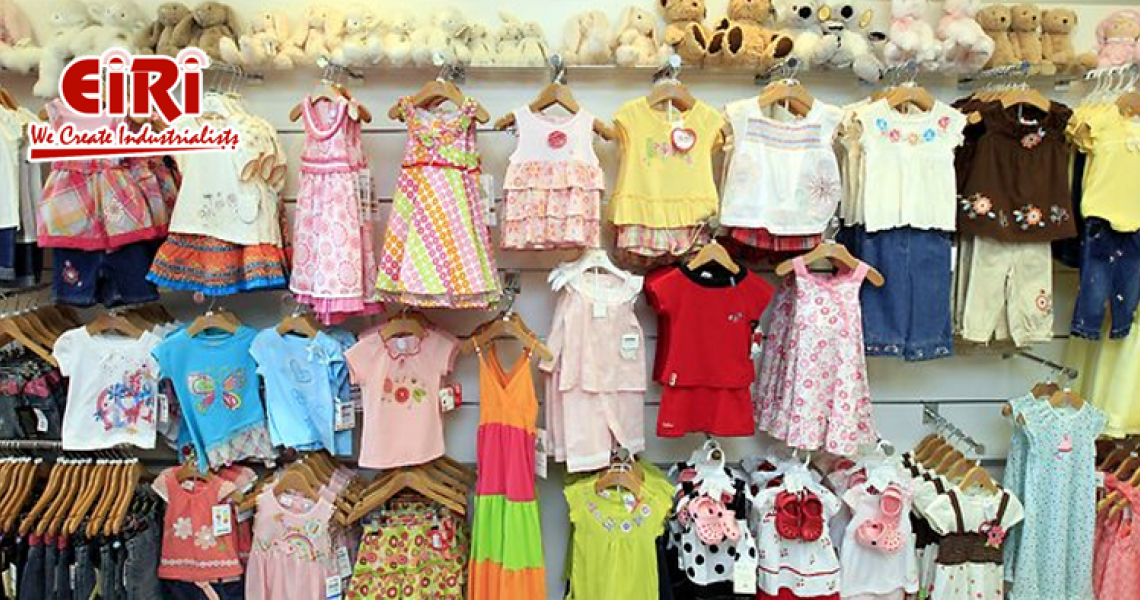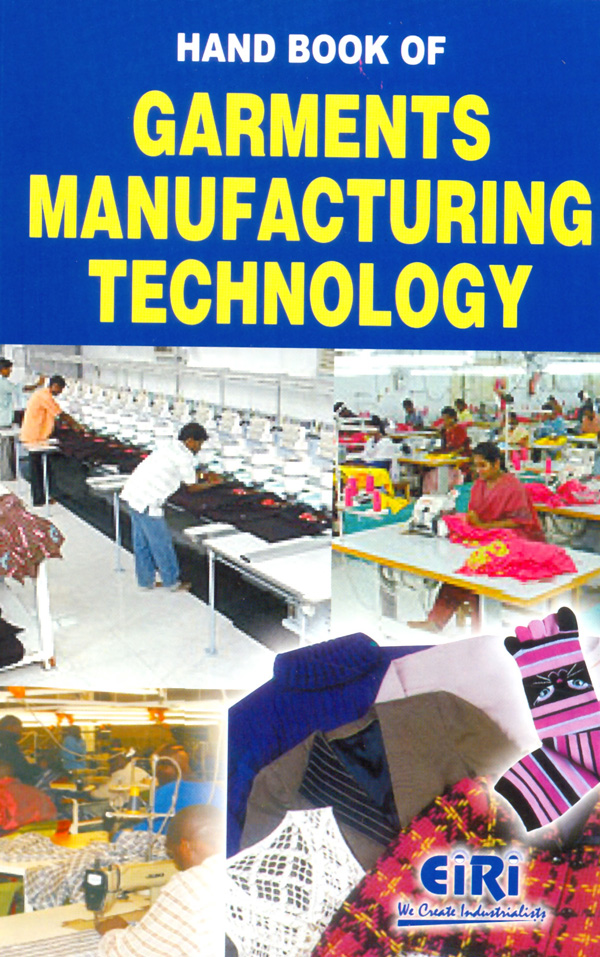Kids Wear Manufacturing Project Report: Trends, Growth Drivers, and Future Outlook

The world of kids' fashion is a dynamic and ever-evolving industry. Kids wear manufacturing, a pivotal component of this sector, is responsible for creating an array of clothing and apparel catering to the youngest members of our society. With a blend of creativity, innovation, and functionality, the industry has carved a niche that encompasses a wide range of styles, materials, and designs to meet the diverse demands of parents and caregivers.
The Flourishing Realm of Kids Wear Manufacturing
Kids wear manufacturing is an integral part of the global fashion industry, focusing exclusively on clothing for infants, toddlers, children, and pre-teens. This sector is characterized by its unique challenges and opportunities, driven by factors such as changing fashion trends, evolving consumer preferences, and a growing awareness of children's comfort and style.

The Key Components of Kids Wear Manufacturing
Manufacturing kids' clothing involves a complex and multifaceted process, comprising several essential components:
- Design and Creativity: The process begins with creative designers who conceptualize and sketch unique designs that resonate with children's preferences and parents' sensibilities. These designs encompass a wide range of styles, from casual wear to formal attire, and include considerations for age-appropriate themes and patterns.
- Material Selection: The choice of fabrics is critical in kids wear manufacturing. Materials must be soft, breathable, and hypoallergenic to ensure the comfort and safety of young wearers. Natural fabrics like cotton, as well as synthetic blends, are commonly used.
- Manufacturing Processes: The actual manufacturing involves cutting, stitching, and assembling the garments. Precision and quality control are paramount, given the need for durability in kids' clothing, which often endures active play and frequent washing.
- Sizing and Age Groups: Kids wear manufacturers produce clothing for various age groups, from newborns to teenagers. Sizing and fit must be age-appropriate, accommodating the rapid growth and development of children.
- Safety and Compliance: The safety of children is a top priority in kids wear manufacturing. Manufacturers must adhere to safety standards and regulations, ensuring that products are free from harmful chemicals and meet flammability and choking hazard requirements.
Market Dynamics and Growth Drivers
The market for kids wear manufacturing is thriving, driven by several key factors:
Parental Fashion Consciousness
Parents' fashion consciousness plays a significant role in driving the demand for kids wear manufacturing. Here's a more detailed look:
- Trend-Driven Purchases: Parents often seek trendy and stylish clothing options for their children, mirroring current fashion trends. They want their kids to look fashionable and feel confident in their attire.
- Brand Preferences: Many parents are loyal to specific kids wear brands known for their design aesthetics, quality, and reputation. They are willing to invest in well-established brands that align with their fashion sensibilities.
- Personal Expression: Parents see their children's clothing as a means of expressing their own sense of style and values. They seek clothing that reflects their family's personality and values.
- Occasion-Specific Apparel: Special occasions such as weddings, birthdays, and holidays drive parents to shop for unique and stylish outfits for their children. This demand often leads to the creation of themed and formal wear collections.
Rising Disposable Income
The growth in disposable income is a significant driver of the kids wear manufacturing market. Here's a closer look:
- Increased Spending: As household incomes rise, parents have more financial resources to allocate to clothing expenditures. This allows them to explore premium and designer options, boosting the demand for higher-priced kids wear.
- Quality Over Quantity: With more disposable income, parents prioritize quality over quantity. They are more willing to invest in durable, well-crafted clothing that can withstand wear and washing.
- Branded and Designer Choices: The availability of a wider range of price points, including luxury and designer brands, becomes accessible to a broader segment of consumers with higher disposable incomes.
E-commerce Boom
The proliferation of e-commerce has transformed the landscape of kids wear manufacturing. Here's a detailed perspective:
- Convenience and Accessibility: E-commerce platforms offer parents the convenience of shopping for kids' clothing from the comfort of their homes. This accessibility has expanded the reach of kids wear manufacturers to a global customer base.
- Diverse Selection: Online stores provide an extensive range of choices, making it easier for parents to find specific styles, sizes, and brands that meet their preferences.
- Reviews and Recommendations: Parental reviews, recommendations, and ratings on e-commerce platforms significantly influence purchasing decisions. Positive reviews and word-of-mouth marketing contribute to brand recognition and trust.
- Personalized Shopping: Many e-commerce platforms use algorithms to provide personalized recommendations, making it easier for parents to discover new kids wear options tailored to their tastes.
Sustainability and Ethical Concerns
Consumers are increasingly concerned about sustainability and ethical practices in the fashion industry, and this trend impacts kids wear manufacturing:
- Eco-Friendly Materials: Parents seek kids wear made from sustainable and eco-friendly materials, such as organic cotton, bamboo, and recycled fabrics. They are conscious of the environmental impact of clothing production.
- Ethical Production: Manufacturers are adopting ethical and fair labor practices to ensure that the clothes they produce are made in safe working conditions, and workers are paid fair wages. Ethical manufacturing practices resonate with socially conscious consumers.
- Transparency: Brands that are transparent about their supply chains and sustainability initiatives gain the trust of parents who value ethical production. Certification labels, such as Fair Trade or organic certifications, are becoming important indicators of ethical practices.
Celebrity and Social Media Influence
Celebrities and social media influencers have a substantial impact on kids' fashion trends and purchasing decisions:
- Celebrity Endorsements: When celebrities dress their children in certain brands or styles, it often creates a surge in demand for those specific items. Celebrities are influential fashion trendsetters for kids.
- Social Media Campaigns: Brands collaborate with social media influencers and mommy bloggers to showcase their products. These influencers often share their children's outfits on platforms like Instagram, driving brand visibility and sales.
- Trending Styles: Social media platforms are ideal for showcasing trending styles and fashion inspiration, influencing parents to follow these trends for their kids.
The interplay of these market dynamics and growth drivers paints a picture of a thriving kids wear manufacturing industry that is responsive to changing consumer preferences, fashion trends, ethical concerns, and technological advancements. As the industry continues to evolve, it offers opportunities for brands and manufacturers to innovate and cater to the diverse needs of parents and their fashion-conscious children.
Future Forecast and Trends in Kids Wear Manufacturing
The future of kids wear manufacturing holds immense promise, driven by evolving consumer preferences, technological advancements, and shifting societal values. Sustainable fashion is poised to become a dominant trend, with a growing emphasis on eco-friendly materials and ethical production practices. Brands that prioritize sustainability will likely gain a competitive edge, appealing to environmentally conscious parents. Gender-neutral clothing is also on the rise, challenging traditional gender stereotypes and promoting inclusivity.
The integration of technology into kids wear, such as smart fabrics and interactive designs, will offer innovative functionalities, enhancing both style and functionality. Personalization is set to become a hallmark of the industry, as parents seek unique and customized outfits for their children. Additionally, with the influence of social media and celebrity endorsements continuing to shape kids fashion trends, savvy marketing strategies that leverage these channels will remain critical. As the industry moves forward, it will be essential for manufacturers to remain agile, adaptable, and responsive to these emerging trends to meet the ever-evolving demands of young consumers and their parents.
The future of kids wear manufacturing promises continued growth and innovation. Key trends to watch for include:
- Sustainable Fashion: Sustainability will become even more prominent, with an emphasis on eco-friendly materials and ethical production processes.
- Gender-Neutral Clothing: A move towards gender-neutral and unisex clothing options, promoting inclusivity and diversity.
- Smart and Tech-Infused Clothing: Integration of technology, such as smart fabrics and interactive designs, to enhance functionality and appeal.
- Personalization: Increasing demand for personalized and customized kids wear, allowing parents to create unique outfits for their children.
The Profitable Future of Kids Wear Manufacturing
Yes, the kids wear manufacturing industry is indeed profitable and holds a bright future. Despite its challenges, the industry continues to thrive due to several factors that work in its favor. The growing fashion consciousness among parents, rising disposable incomes, and the convenience of e-commerce have contributed to a robust demand for children's clothing. Moreover, the emphasis on sustainability and ethical practices is not only a reflection of changing consumer values but also an opportunity for businesses to differentiate themselves and gain a competitive edge.
Looking ahead, the future of kids wear manufacturing is characterized by exciting trends such as sustainable fashion, gender-neutral clothing, technological integration, and personalization. These trends not only respond to evolving consumer preferences but also open up new avenues for innovation and creativity. The industry's ability to adapt to these shifts, leverage social media and celebrity influences, and offer high-quality, stylish, and ethical products will undoubtedly keep it on a profitable trajectory.
In conclusion, the kids wear manufacturing industry is poised for continued growth and success. It remains a vibrant and dynamic sector where businesses can thrive by embracing emerging trends, maintaining a focus on quality, and catering to the diverse needs of fashion-conscious parents and their beloved children. The profitability of this industry is a testament to its resilience and potential for prosperity in the years to come.










